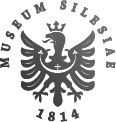At a relatively early stage after the end of the war, a number of people started to show an interest in the rows of reinforced-concrete defensive structures from the 1930s. However, due to more urgent tasks associated with regenerating the country, the structures gradually fell into disrepair or had their fittings stolen.
In the 1970s, however, the situation started to change and there was growing interest in the refurbishment of the structures. It was at this time that the first, often informal, groups of enthusiasts came into being; these groups showed remarkable dedication in refurbishing individual fortresses, for example in the Náchod, Kralice, Ostrava and Opava regions.
Military history and fortress enthusiasts devoted the greatest amount of attention to the group of fortresses located north of Hlučín, between the villages of Markvartovice, Šilheřovice, Darkovice and Darkovičky. These fortresses lay in ruins and it was clear that the process of reconstruction would not be an easy one. However, these fortresses included various types of structure, varying degrees of durability, one- and two-sided structures with varying types of armament, and were relatively easily accessible.
The refurbishment of the Fortifications Complex began in 1980, when the then newly-created Museum of the Revolutionary Struggle and Liberation in Ostrava created a working group, headed by Jan Polášek, whose goal it was to refurbish several, selected fortification structures. On 28th June 1984 the group took charge of four different types of structure, the future Hlučín-Darkovičky Fortifications Complex, and the three-member working group commenced reconstruction work together with other volunteers.
The relevant plans of structures and their fittings were provided by the Military Archive in Prague. The Alej structure, for example, necessitated the removal of most of the trees and bushes that had grown up around it, forming a relatively thick growth blocking the view of the fortress.
Old tree-stumps were also removed from the vicinity of the blockhouse and a bridge was constructed over the ditch that had been created following the removal of rocks in the rear part of the blockhouse, providing temporary access to the interior of the structure. In the next phase of reconstruction, armour plating was taken, with the permission of the Regional Housing and Construction Office in Olomouc, from the fortresses in Milostovice as a replacement for plating that had been removed by the occupying forces in 1940.
A car park was constructed and a digger used to clear the anti-tank ditches on both sides of the fortress, which had been choked up for years with soil and waste. The open space around Alej was filled with obstacles, chiefly concrete cones and steel ‘hedgehogs’.
The first structure to accept visitors was a řopík, the interior of which was fitted with technical equipment, including weapons. The interior was ‘christened’ on 28th May 1985. The exhibition premises then commenced full operations on 28th September 1988.
The Hlučín-Darkovičky Fortification Complex consists of five structures. The main structure in the Complex is MO-S 19 Alej, which is a two-sided, two-winged, two-floored, independent infantry blockhouse, with two bells and a gun turret, supplemented by the MO-17 Štípky, MO-S 18 Obora and MO-S 20 Orel heavy structures and the embedded, enhanced type-37A 140 Z casemate, known as a řopík.
Article last updated: 30.07.2012
Print whole article



